The beauty of the Kumaon region in Uttarakhand lies in its scenic villages. The farther you go, the more you will explore the magnificence of the Himalayan mountains and the hidden valleys. Munsiyari is the farthest point in Kumaon that tourists often visit on their trips. Beyond that is more of a trekkers’ zone. But if you can manage to come to Munsiyari, you will be blessed with the grand view of the Panchachulli Peaks and other adjacent peaks.
Munsiyari has everything a nature lover would dream of – proximity to the Himalayas, camping under the star-studded sky, trekking to the hidden valleys and meadows, living with the locals and exploring their culture, tasting the authentic Kumaoni cuisines.
Pin the image below to save this post and read it later!!
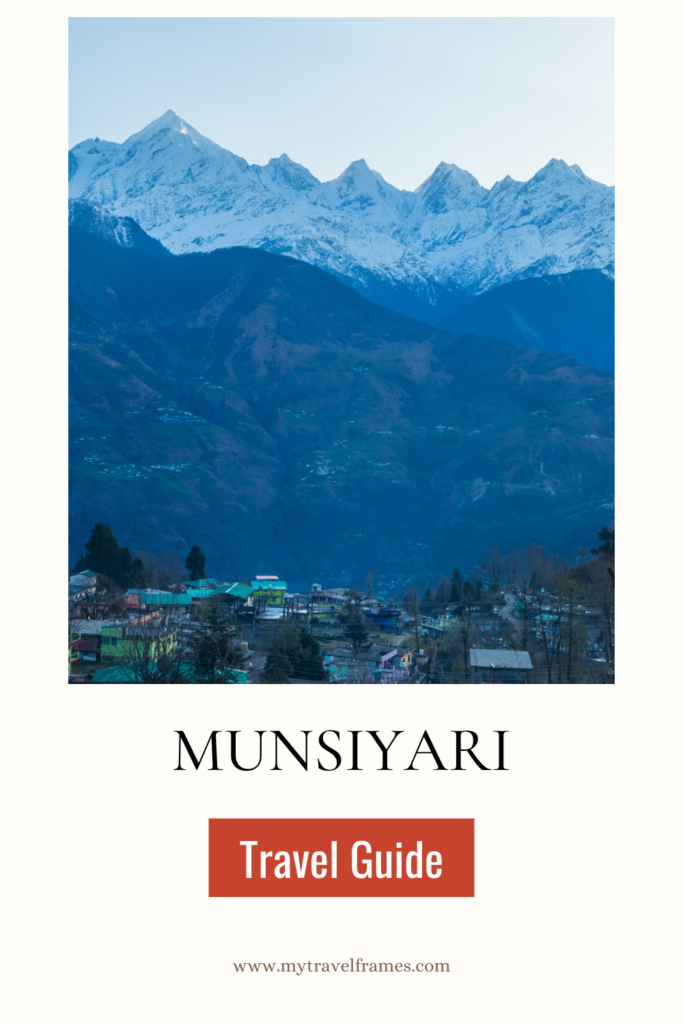
Table of Contents
About Munsiyari
Munsiyari is a hill town in the Pithoragarh district of Kumaon region in Uttarakhand, located at 2200 metres height from sea level. The name Munsiyari literally means “place with snow”. It is situated beside the Goriganga River that bifurcates the Johar Valley. Munsiyari is the gateway of Johar Valley and was an important trade stop in the old Indo-Tibet silk route. Now the town is famous as an offbeat tourist destination that offers one of the closest and best views of the Panchachulli Range of peaks.
Apart from tourism, the economy depends on agriculture, animal husbandry, and related activities. In summer, the meadows and valleys are covered with flowers, while the slopes are cultivated for crops, and in winter, the whole place gets covered with thick sheets of snow. Munsiyari has become a favourite destination for skiing enthusiasts and honeymooners during winter.
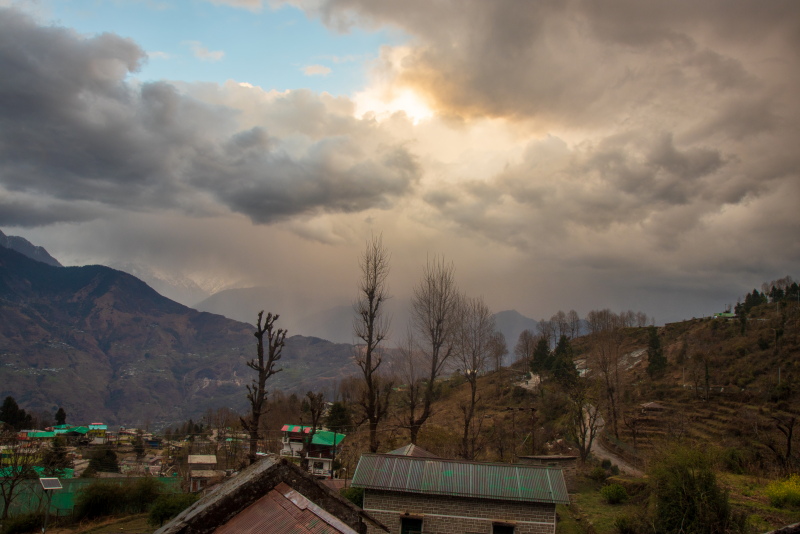
How to reach
The distance between Nainital and Munsiyari is 260 kilometres and takes 10-12 hours to reach. Delhi is a little above 600 kilometres from Munsiyari, and you need to take a night stop in between before going to Munsiyari.
Two routes will take you to Munsiyari from Delhi or Nainital – one goes via Kapkot and the other via Thal and Chaukori. You can take the road to Bageswar, and from Bageswar, take either way to Munsiyari. Both roads meet at Dhekuna; thereafter, a common road goes to Munsiyari.
The road that goes via Chaukori is a well-known route that most tourists prefer. The route via Kapkot is less taken and is a narrow road alongside the vertical cliff. The road is very adventurous. It will remind you of India’s most difficult Himalayan roads, but the views are mindblowing.

How to reach by road
There are no direct buses available from Delhi. You can reach Nainital or Almora, from where you will get a bus or shared cab to Munsiyari.
How to reach by train
The nearest railway station to Munsiyari is Kathgodam which is 270 kilometres away. You will get buses to Almora or Bageswar from Kathgodam. From Almora or Bageswar, take another bus or cab to Munsiyari.
How to reach by air
The nearest airport to Munsiyari is Pantnagar which is 350 kilometres away. Air India has flights from Dehradun and Delhi to Pantnagar. Delhi Aiport is 630 kilometres away from Munsiyari.
Book your flight to Pantnagar or Delhi!!
Things to see
Panchachulli Peaks
The main attraction of Munsiyari is the up-close view of the Panchachulli Peaks. The peaks look massive from most of the places in Munsiyari. Panchachulli has five peaks from Panchachulli I to V. During sunset, when the golden light hits those peaks, they look like burning chulhas (cooking hearth). According to a mythological story, it is believed that when the Pandavas from Mahabharata ascended to heaven, they stopped at this place and Draupadi, the wife of all five Pandavas, cooked food for the five brothers on those five peaks. That’s why they are called chulhas or chullis.
The altitude of the Panchachulli peaks varies from 6334 metres to 6904 metres. Panchachulli 2 is the tallest among them, although Panchachulli I looks like it. Apart from Panchachulli III, all other peaks are climbed to the summit at different times.

Nandadevi Temple
Nandadevi temple is located on a hilltop near Munsiyari. The temple is dedicated to Devi Nanda or Parvati. It is a small structure with a conical facade with a backdrop of Panchachulli peaks. This temple is one of the oldest temples in the Pithoragarh district.
The temple is located 3 kilometres away from the main town, which was once to be hiked from the market area. Now a motorable road connects up to the temple, and only a 200-metre walk is needed to reach the temple. The locals near the gate collect a nominal entry fee for the temple. You can spend an entire day sitting on the meadow behind the temple and looking at Panchachulli peaks.
Tribal Museum
The Tribal Heritage Museum in Munsiyari is the personal property of Mr Sher Singh Pangtey, who is the owner and curator of this museum. It is located in a building beside his own residence. This museum has a good collection of artefacts that reflects the art, culture and lifestyle of the Bhotia people residing in the upper Himalayan valleys in Kumaon. The collection consists of household items; traditional dresses for men and women; pottery items; pieces of jewellery; fabrics; seeds; personal items like typewriters and radios; currencies of different countries; manuscripts of articles on Kumaon and its people; books and photographs. The museum is located in Nanasen village near Munsiyari at a distance of 2.5 kilometres. There is a ₹20 entry fee to visit the museum.
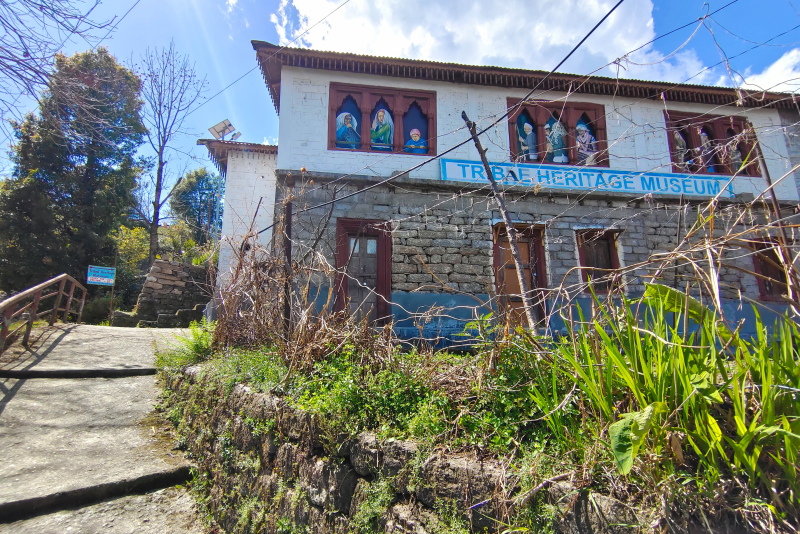
Maheswari Kund
Maheswari Kund or Mesar Kund is near Munsiyari town and can be visited on a day hike. The stone-laid trail goes through oak and rhododendron forests and ends at a meadow where the Kund is located. You can have your packed breakfast and lunch here with your family and spend some memorable time in nature.
Thamri Kund
Thamri Kind is another short hike that can be done from Munsiyari. The hike starts 10 kilometres from Munsiyari. The hike from the entry gate is 3 kilometres, which takes around 40 minutes. The trail is narrow at the beginning, and there are stairs at most parts of the trek.

Khaliya Top
Khaliya Top is the best day trek that can be done from Munsiyari. The hilltop offers an enchanting view of the snow-capped mountains like Panchachulli, Nanda Devi, Nandakot and others. The trek starts from Balati Bend, which is 12 kilometres, before reaching Munsiyari. The ascend takes around 4 hours and has a steep climb in between. The alpine meadows that are covered with snow until late spring is a visual treat for hikers.
Kalamuni Top and Temple
Kalamuni Top is a pass that needs to be crossed before reaching Munsiyari. There is a temple dedicated to Goddess Kali at Kalamuni Top. Kalamuni Top offers a beautiful view of Panchachulli Peaks. Many Rhododendron trees near the temple bloom with red and pink Rhododendron flowers in Spring. It often snows on Kalamuni Top during cloudy weather, and if you are lucky, you may get snow at Kalamuni Top even in summer.
Birthi Falls
Birthi Waterfall is a vast cascading waterfall on the way to MUnsiyari. The water jumps from 400 feet and is visible from a substantial distance. To reach the base of the waterfall, one has to hike for 20 minutes from the Thal-Munsiyari road. The distance between Munsiyari and Birthi Waterfall is 33 kilometres.

Betulidhar
Betulidhar is 9 kilometres away from Munsiyari on Munsiyari-Madkot Road. It is famous for its mountain slopes that are ideal for skiing from December-February. A large Rhododendron garden in Betulidhar can be visited during spring. As Betulidhar is at mote altitude than Munsiyari, the views of snowcapped mountains also look fantastic from here.
What to do
Trekking
Munsiyari is a base camp for many trek routes in Kumaon Himalayas. A day trek like Kahliya Top, Maheshwari Kund or Thamri Kund can be done from Munsiyari. There are a few more famous treks, like Milam Glacier, Ralam Glacier, Namik Glacier and Nandadevi base camp, that start from Munsiyari. The best time to do these treks are between May-September.
Famous treks that start from Munsiyari
Milam Glacier Trek
Milam Glacier Trek is among the most popular treks in the Kumaon Himalayas. This trek takes 15 days to complete. Milam Glacier originates from Kohli and Trishul peaks. This trek covers beautiful hilly hamlets, lush green meadows and mesmerising Johar Valley, which used to be the trade route between India and Tibet.
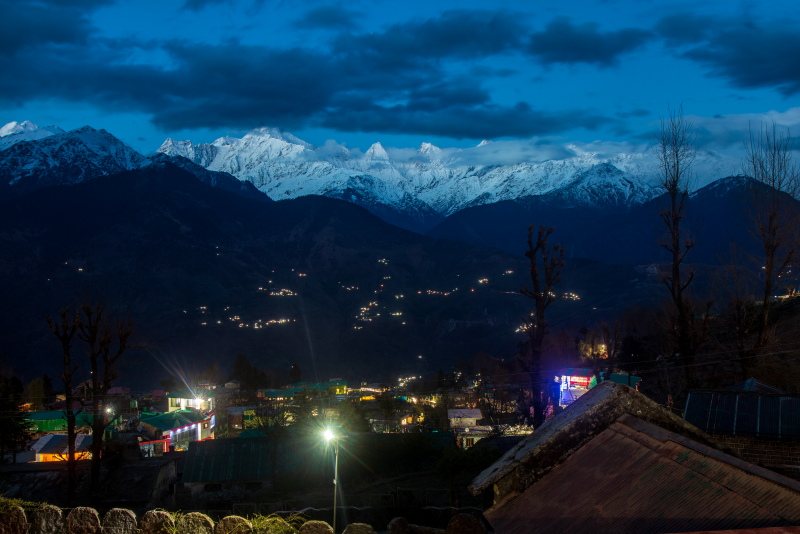
Ralam Glacier Trek
Ralam Glacier trek is a challenging trek that takes around 19 days. The trek route goes up to the Ralam Glacier, 3-4 km ahead of Ramam village. Ralam Glacier, perched at 4000 metres altitude, originates from Ralam Dhura and comes under Great Himalayan National Park.
Namik Glacier Trek
Namik Glacier Trek is an offbeat trek that offers mesmerising views of Panchachulli Peaks, Pindari, Kafni and Sunderdunga Glaciers. It takes ten days to complete this trek, most of which involves walking on alpine meadows.
Nandadevi Base Camp trek
Nanda Devi East Base Camp Trek is one of the most challenging treks in the Himalayas and takes 10-12 days to complete. The route goes via Martoli village, a deserted village on the route. The trekking trail includes grassy hills, rocky zones, muddy patches, slippery snow trails and alpine meadows that offer mesmerising views of Himalayan Peaks.
Camping
amping is a favourite activity for many travellers in Munsiyari. One can camp at Khaliya Top or near Betulidhar, from where the unobstructed and enchanting views of Panchachulli Peaks and other snow-capped Himalayan peaks like Rajrambha, Nagalaphu, Nanda Devi, Nanda Kot are available.
Photography
Munsiyari is an excellent place for nature photographers. The landscapes of Himalayan peaks, the orange hues over the snow-clad mountains, the warm and smiling villagers and their lifestyle, and the farms and fruit orchards all are great for photography. The trek to Khaliya Top also offers the scope of photographing wildlife and Himalayan birds.

Best time to visit
The best time to visit Munsiyari is between March-June and the end of September- early November when the weather is pleasant and trek routes are open. Days are sunny with temperatures above 20 degrees, while the nights are cold and enjoyable.
Between July and early September, monsoon prevails in Munsiyari and other areas of Uttarakhand, which causes moderate to heavy rain, and roads are in bad condition, with landslides frequently occurring. It is better to avoid visiting Munsiyari at this time unless you are planning for a trek to the upper Himalayas.
From December to February, Munsiyari gets covered with snow, and the weather is chilling cold. Honeymooners and the ski-lovers visit Munsiyari during this time. The roads are usually kept open, and accessibility is not a problem usually.

Where to stay
There are hotels, homestays and camping facilities in Munsiyari and nearby areas. Hotels in upper Munsiyari offer clear views of snow-capped mountains and are usually preferred by tourists. Most of the rooms are mountain-facing, with basic amenities and an in-house restaurant. The hotels in the main market are relatively cheaper, with mountain views only from upper-floor rooms.
If you want to live with locals, you can opt for the homestays, where you will get local Kumaoni foods. Recently a few camping and glamping options get opened in Munsiyari and nearby areas so that travellers can experience nature more closely.
We stayed in KMVN Tourist Rest House, which has an excellent location with upper-floor rooms offering views of Panchachulli Peaks from the attached balconies. The other good options are Hotel Milam Inn and Hotel Vijay Mount. There are quite a few hotels near the market which are relatively cheaper. You can also stay in a camp and enjoy a glamping experience in Munsiyari.
Pandey Lodge is a budget hotel near the Munsiyari taxi stand, which is very popular among Bengalis, as Bengali food is available there. I tried a meal there, and I was very disappointed with the quality of the food. It was not fresh and could only please Bengalis who morbidly craved home-like foods.
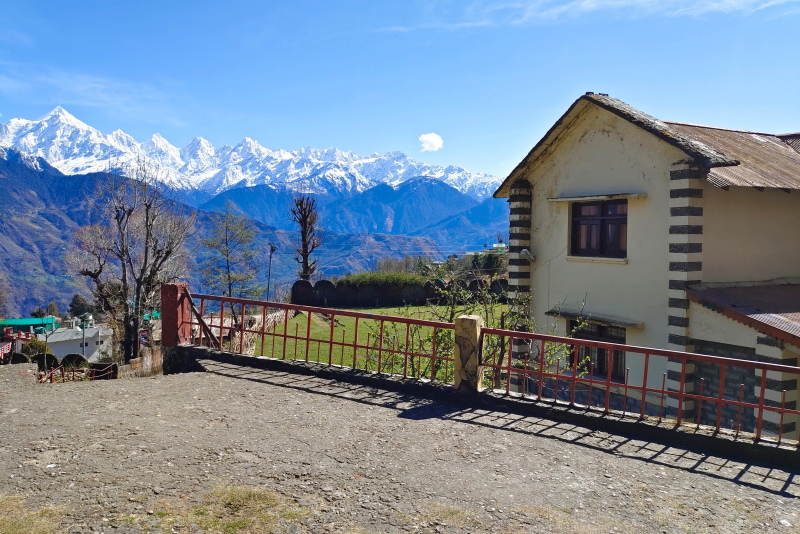
Where to eat
Munsiyari, a little town, has few options for restaurants and cafes. There are a few roadside eateries close to the market. It is better to have your meals in the hotel itself. The restaurant in KMVN rest house provides tasty food. You must place your order in advance to get the food cooked.
What to buy
The best place to buy Kumaoni shawls and sweaters is the Saras Market in Munsiyari. It has two stores selling winter clothing, bags, and souvenirs made by local women. I heard that prices are low compared to other areas in Kumaon. But I did not find it cheap. The woollen items are mostly hand-woven, although the options are limited.
Mobile connectivity
Munsiyari has good mobile connectivity in the town. I did not have any issues with Vodafone and Jio networks.

How to plan an itinerary for Munsiyari
Munsiyari is one of the last destinations in Kumaon for conventional tourists if not a trekker. Although the roads are in good condition, it takes 12 hours to reach Munsiyari from Nainital. So, not every tourist who is visiting Nainital, Kausani or Mukteswar travels this far for an up-close view of Panchachulli. But if you do, you will feel blessed when you witness the sunrise and sunset on Panchachulli Peaks. It is purely magical. You can plan your Munsiyari visit as per the below itinerary.
Day 1 – Arrive from Nainital/Kausani/Almora/Binsar/Chaukori, stop at Kalamuni Top on the way, and night stay at the hotel.
Day 2 – Visit Thamri Kund in the morning, Tribal Museum. Then have your lunch and go to Nandadevi Temple to see the sunset from there.
Day 3 – Day trek to Khaliya Top.
Day 4 – Check out from your hotel and drive back to other destinations. Stop at Birthi Waterfall on the way.

Places en route where you can take a break
Kausani
Kausani is 162 kilometres from Munsiyari and takes nearly 7-8 hours to reach. Kausani is a quaint hill station in the Bageswar district that offers a panoramic view of the snow-capped Himalayas. Kausani also has tea gardens and shawl factories where you can spend some time. The Anashakti Ashram, associated with the memory of Gandhiji, is a must-visit place in Kausani. The Baijanath temple complex near Kausani is also a place that you should not miss during your stay at Kausani.
Bageswar
Bageswar is a holy town at the confluence of the Gomati and Saryu rivers. It is also a district headquarters, so comparatively a bigger town located in a valley. Most cities in Uttarakhand are well connected to Bageswar. Two roads go to Munsiyari from Bageswar. One is through Kapkot, and the other one is via Chaukori.
Bageswar Dham has many temples in the town. Among them, Bagnath Temple is the most visited by devotees. According to mythology Bagnath Temple is the site where sage Markendeya worshipped lord Shiva. Pleased with the prayer, the Lord appeared in his Tiger Avatar here.
The temple has existed at this place since the 7th century, and the present building was constructed by Chand ruler Laxmi Chand in 1450 AD. You should not miss it if you travel via Bageswar or take a break here. Bageswar is 125 kilometres from Munsiyari and takes 6-7 hours to reach either way.

Chaukori
Chaukori is a village in the Pithoragarh district that comes on the way to Munsiyari if you travel via the Thal-Munsiyari road. Chaukori is 100 kilometres from Munsiyari and takes around 5 hours to reach from Munsiyari.
Chaukori offers an up-close view of snow-capped peaks like Mt Trishul, Mt Nandadevi, Mt Nandakot etc. The old tea estates in Chaukori, the Berinag Temple, Patal Bhubaneswar cave and Askot Musk Deer Sanctuary are other places to visit if you are in Chaukori.
Read more: Chaukori In Kumaon | Upclose With The Himalayas
Binsar
Binsar is a hamlet inside the Binsar Wildlife Sanctuary that is popular for its forest and the panoramic view of the Himalayas. The view from Binsar expands from Bandarpunch Peak in Garhwal Himalaya to Nepal Himalayas in the east. The forest trails inside Binsar Wildlife Sanctuary are a great way to explore wildlife and birding. The forest is mainly of Oak, Deodar, Pine and Rhododendron trees. In spring, the paths are covered with Rhododendron flowers at places.
The Binneswar Mahadev Temple and the Golu Devta Temple are other attractions the locals frequently visit. Binsar is 184 kilometres from Munsiyari and takes 8-10 hours to travel. Two roads go to Munsiyari from Binsar. One is via Bageswar, and the other is via Dhawalchina and Chaukori, a less-taken road. You can visit Jageswar Dham and Patal Bhubaneswar on the way if you travel by the second route.
Read more: Binsar In Uttarakhand | A Majestic Panoramic View Of The Himalayas

Book your trip: Resources
- Flight
Use Skyscanner or Google Flights to book your flight.
- Accommodation
Tripadvisor and Agoda are perfect for booking your hotel. If you want to stay in a hostel, then Hostelworld would greatly help you find one at your convenience.
- Travel Insurance
World Nomads is perfect for travel insurance. You can get comprehensive protection from them. Let them take care of unexpected situations while you concentrate on your trip.
- Package Tour and Activities
You can book a package tour from G-Adventures and Viator. They are a reputed company arranging small group tours and customising them per your requirements. You can also use Get Your Guide to book your private transport, city tours, heritage walks, food walks and other experiences like a cooking lesson or a Yoga session.
Disclosure: Some of the links below are affiliate links. You will be directed to another third-party website when you click those links. If you purchase anything via those links, I will earn a referral bonus without any extra cost to you.

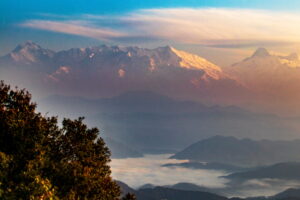
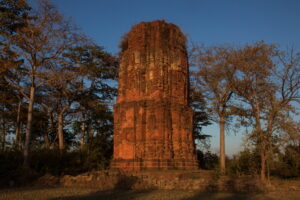
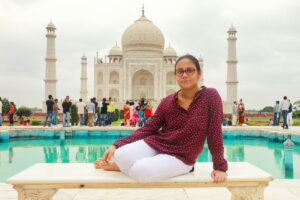
Pingback: Chaukori In Kumaon | Upclose With The Himalayas - My Travel Frames